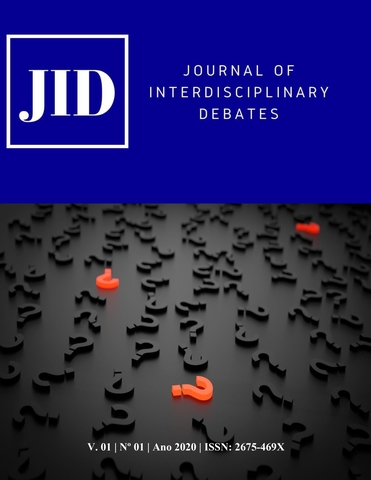Abstract
The present study compared the effectiveness of contextualized, decontextualized, and glossing on learners’ short-term and long-term vocabulary retention in an EFL context. To carry out the study, 66 male senior high school students at intermediate language proficiency level were selected from four intact classes. A proficiency test was administered to all participants to assure their homogeneity in language proficiency. Then, the classes were assigned into four groups including three experimental groups, i.e., the decontextualized group, the contextualized group, the glossing group, and a control group. After receiving five sessions of treatment, a vocabulary test was administered as the posttest to all the four groups once in order to assess their short-term retention and once 16 days later as a delayed posttest to assess their long-term retention of vocabulary. Two separate ANOVAs were run on the collected data which lent weight to the positive effect of the treatment on the students’ long-term retention of vocabulary. The results revealed that the experimental groups outperformed the control group. Also, regarding the short-term retention, no significant difference was found between the experimental groups and the control group. Finally, it is highly recommended that language teachers and syllabus designers introduce this contextualized instruction to the learners to encourage a more interactive way to make sense of the text and consequently improve the students’ long-term retention of vocabulary.
References
Chen, I. J., & Yen, J. C. (2013). Hypertext annotation: Effects of presentation formats and Learner proficiency on reading comprehension and vocabulary learning in foreign languages. Computers & Education, 6(3), 416–423.
Chen, I. (2016). Hypertext glosses for foreign language reading comprehension and vocabulary acquisition: effect of assessment methods. Computer Assisted Language Learning, 29(2), 413–426.
Farvardin, M., & Biria, R. (2012). The impact of glosses types on Iranian EFL students reading comprehension and lexical retention. International Journal of Instruction, 5(1), 99–14.
Gillam, S. L., & Reece, K. (2012). Language outcomes of contextualized and decontextualized language intervention: Results of an early efficacy study. The Modern Language Journal, 19(2), 110–129.
Hague, S. A. (1987). Vocabulary learning: The use of grids. English Language Teaching Journal, 37(3), 243–246.
Hunt, A., & Beglar, D. (2005). A framework for developing EFL reading vocabulary.
Reading in a Foreign Language, 17(1), 23–59.
Jacobs, G. M., Dufon, P., & Fong, C. H. (1994). L1 and L2 glosses in reading passages: Their effectiveness for increasing comprehension and vocabulary knowledge. Journal of Research in Reading, 17(11), 19–28.
Kermani, S. K., & Seyedrezaei, S. H. (2015). The effect of contextualized vocabulary teaching on learners’ vocabulary learning and retention. Journal of Language Sciences & Linguistics, 3(5), 90–95.
Kim, D., & Gilman, D. A. (2008). Effects of text, audio, and graphic aids in multimedia instruction for vocabulary learning. Educational Technology and Society, 11(3), 114–126.
Knight, S. (2000). Dictionary use while reading: The effects on comprehension and vocabulary acquisition for students of different verbal abilities. The Modern Language Journal, 78(3), 285–299.
Laufer, B., & Rozovski-Roitblat, B. (2015). Retention of new words: Quantity of encounters, quality of task, and degree of knowledge. Language Teaching Research, 16(9), 687–711.
Nation, I. S. P. (1990). Teaching and learning vocabulary. Boston, Mass.: Heinle & Heinle.
Nation, I. S. P. (2011). Research into practice: Vocabulary. Language Teaching, 44(4), 529–539.
Nation, I. S. P. (2013). Learning vocabulary in another language (2nd ed.). Cambridge: Cambridge University Press.
Öztürk, Gökhan. (2012). The effect of context in achievement vocabulary tests. Journal of Educational and Instructional Studies in the World, 6(2), 47–52.
Richards, J. C., & Schmidt, R. (2010). Longman dictionary of language teaching and applied linguistics (4th ed.). London: Pearson Education.
Rouhi, A., & Mohebbi, H. (2013). Glosses, spatial intelligence, and L2 vocabulary learning in multimedia context. 3L: Language, Linguistics, Literature, 19(2), 43–55.
Rowe, M. (2013). Decontextualized language input and preschoolers‟ vocabulary development. Seminar in Speech Language. 34(4), 260–266.
Schmitt, N. (2000). Vocabulary in language teaching. New York, NY: Cambridge University Press.
Schmitt, N. (2008). Teaching vocabulary. White Plains, NY: Pearson Education.
Yoshii, M. (2006). L1 and L2 glosses: Their effects on incidental vocabulary learning.
Language Learning and Technology, 10(3), 85–101.
Yoshii, M. (2014). Effects of glosses and reviewing of glossed words on L2vocabulary learning through reading. Vocabulary Learning and Instruction,3(2), 19–30





